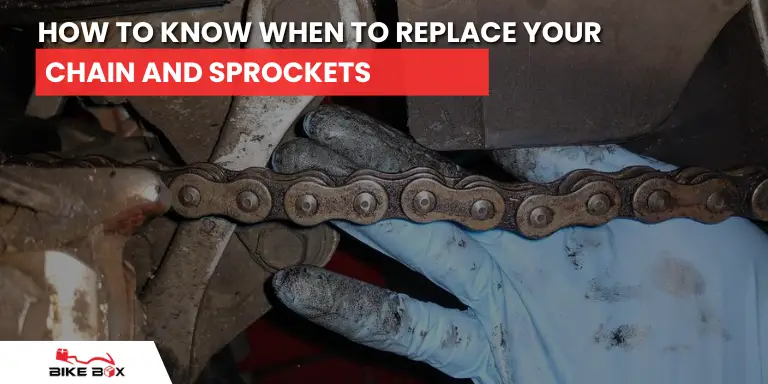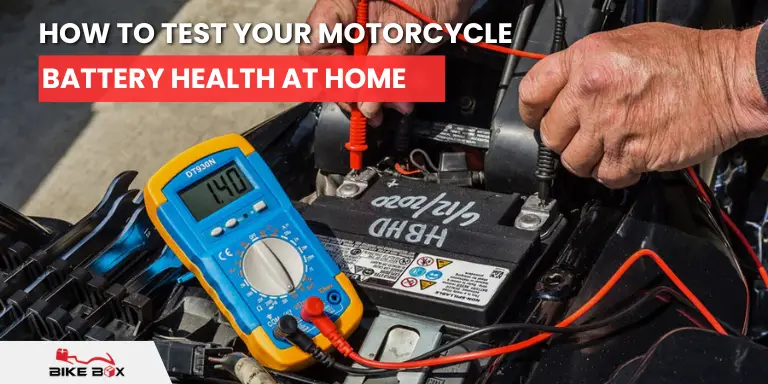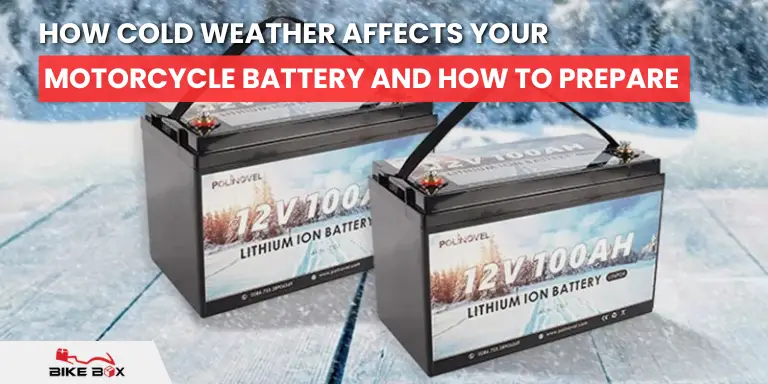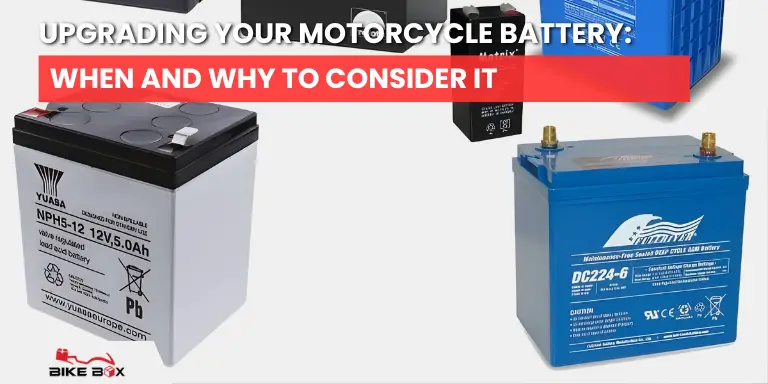Your bike’s chain and sprockets are important. They send power from the engine to the wheels. Over time, they get worn out. When that happens, your ride won’t be smooth. It could even be unsafe. You might feel jerky movements or hear strange sounds. Check things often. Catch problems early. Replace parts before they break. Avoid bigger, costly issues. If you want a deeper dive into how they work and how to care for them, check out our complete guide to motorcycle chains and sprockets.
In this guide, we’ll show you how to tell when it’s time for a replacement. We’ll share tips to keep them in good shape. Look after your parts regularly. And when you need help, Bikebox is here. Fast service. Expert care. No stress.
What Are Chains and Sprockets and How Do They Work?
A chain is a loop. It has metal links. It connects the front and rear sprockets. Sprockets are toothed wheels. One is on the gearbox. That’s the front sprocket. The other rides on the rear wheel. That’s the rear sprocket.
When the engine spins, power travels through the front sprocket. The chain moves. The rear sprocket turns. The wheel spins. The bike moves forward.
Chain tension matters. Too tight is bad. Too loose is worse. Proper tension ensures clean power transfer. It also prevents wear.
You may find this at a motorbike spare parts shop. A bit of knowledge goes a long way.
Signs Your Chain and Sprockets Need Replacing
Look and listen. The signs are there, such as:
- Skipped gears: You hear a skipping sound. The chain jumps. The sprocket may be worn, bent, or damaged. That’s a red flag. Your rear wheel may feel jerky.
- Chain elongation: The chain stretches. Even after proper adjustment, slack appears. You notice excessive play. Measure with your hand. More than 2 cm of movement? It’s worn.
- Damaged sprocket edges: Look at the sprocket. The surface should be smooth. If it looks sharp or bent, it’s worn. That means it’s time to change it. Don’t wait too long. Worn sprockets can damage your chain.
- Rust and corrosion: Rust weakens links. It also degrades sprockets. They won’t mesh well. Performance drops. Wear increases.
- Stiff links: Move each chain link. Does one seize? Or feel tight? That link strains the rest of the system. It wears more quickly and can break.
- Noise and vibration: A healthy chain works smoothly. If it’s loud, something’s not well. Hear rattling or grinding? That’s not normal. Feel shaking or vibration? That’s a bad sign. Stop riding. Check your chain now.
Spotting these signs early can help you avoid bigger problems later. If you want to know what to look for in more detail, check out our guide on the 5 signs of a worn-out sprocket. It’s a quick read that could save you a lot of hassle.
How to Inspect Your Chain and Sprockets (Step‑by‑Step)
Here’s a simple, reliable routine.
- Park the bike securely: Use the center stand. Or a paddock stand. The rear wheel must spin freely.
- Clean the chain and sprockets: Use a chain cleaner. A soft brush helps. Remove grime. Then dry with a cloth.
- Check chain slack: Measure the play midway between sprockets. Use a ruler. Compare to your bike’s spec (usually ~2 cm). Too much or too little? It needs adjusting or replacing.
- Check for tight links: Slide each chain link. Wiggle side to side. Spot any stiffness. If a link doesn’t move smoothly, consider replacing the chain.
- Inspect master link and O‑rings (if applicable): Look for missing O‑rings or damaged master links. They keep the lubrication in. If they’re worn, chain wear accelerates.
- Measure chain wear: Use a chain wear instrument. Measure 10 links (12 pitch). If it exceeds 12.5 inches (0.5% stretch), time to replace.
- Check rear wheel alignment: Misalignment causes uneven wear. Inspect adjuster blocks. Adjust if needed.
Each step is quick. You don’t need a workshop. Just time and care. You’ll catch issues early and ride with confidence.
The Consequences of Ignoring Chain and Sprocket Maintenance
You might think, “It’s just a chain.” But the risks are real.
- Chain breakage: A snapped chain can lock the rear wheel. That’s dangerous at speed. You could lose control.
- Fast wear on new parts: If the chain is worn, a new sprocket wears fast. You lose money. You lose time.
- Poor performance: Sloppy power transfer hits acceleration. Fuel efficiency drops. Your ride feels sluggish.
- Safety hazards: A loose chain can slap the crash bars. Or contact the tire. That’s an accident waiting to happen.
Worn sprockets increase chain slippage. Damaged sprockets ruin gear engagement. Riding gets unpredictable. Maintenance isn’t optional. It’s essential.
How Often Should You Replace Your Chain and Sprockets?
There’s no universal schedule. But as a rule of thumb:
- Check every 1,000 km. Clean and lube.
- Replace the chain after ~20,000–30,000 km under normal riding. Harsh conditions? Replace sooner.
- Replace sprockets with the chain. They wear together. A new chain on worn sprockets fails quickly.
Track your kilometers. Keep a log. That helps you plan ahead.
Top 5 Tips to Make Your Chain and Sprockets Last Longer
A few smart habits pay off. A lot.
- Keep it clean: Dirt brings grit. Grit wears metal. Clean every 500–800 km.
- Lubricate often: Use good chain lube. Don’t overspray. Wipe off excess. Lube after cleaning or a wet ride.
- Maintain proper tension: Not too tight. Not too loose. Use your bike’s manual spec. Check regularly.
- Ride smooth: Aggressive acceleration shocks the chain. Shift gently. Use engine braking.
- Use quality parts: Cheap chains stretch quickly. Cheap sprockets wear fast. Go for decent steel. O‑ring chains stay oiled longer.
Following these tips saves money. It also gives you a smooth ride. And peace of mind.
Difference between OEM and Aftermarket Chain and Sprockets
| Option | OEM (Original Equipment Manufacturer) | Aftermarket |
| Who makes it? | Your bike’s manufacturer | Many different brands |
| Fit and quality | Exact fit, reliable quality | Varies: some better than OEM, others worse |
| Price | Usually more expensive | Wide price range |
| Specs | Matches original bike specs | May differ in design, strength, or finish |
| Things to consider | Good for casual riders or those wanting factory-original parts | Choose a trusted brand with good reviews |
| Best for | Light riding, regular conditions | Daily riding, tough terrain, or performance upgrades |
Pick what suits your ride. Ride hard? Go for strong, trusted parts. Ride light? OEM is just fine. Either way, quality matters.
How Much Does It Cost to Replace a Chain on a Bike?
The cost to replace a chain on a bike typically ranges from $100 to $250. It depends on:
- Motorcycle type (small commuter or big ADV).
- Quality of parts (standard OEM or high‑performance aftermarket).
- Local labor rates.
Bikebox: Where Quality Meets Speed for Your Bike
At Bikebox, we know you want good service fast. Our mechanics are skilled and careful. They fix your bike right the first time. We use quality parts that last. But we don’t keep you waiting. Most repairs are done the same day. You bring your bike in, and we handle the rest. Fast service, without cutting corners. That’s how Bikebox works. You get a safe, smooth ride again quickly. Choose us for speed and quality. Ride with confidence every time.
Keep Your Bike Running Strong with Smart Chain & Sprocket Maintenance
You’ve learned the key signs of chain and sprocket wear. You know how to inspect them. You understand the risks of ignoring maintenance. You see how to make them last longer. You know your OEM vs. aftermarket options. And you’ve got a clear idea of replacement cost.
A strong chain equals a happy ride. You feel the power from the engine to the wheel. You ride smoothly. You ride safely.
At Bikebox in Rimal and Sulay centre, we fix your bike fast. Our skilled mechanics know their stuff. Most repairs are done the same day. We work on many bikes at once. You just bring your bike in. We take care of everything else.
Keep checking your bike. Keep your ride smooth. You’ll feel more confident on the road. Ride safe and enjoy every mile.
FAQs
How do I know if my chain is bad?
It feels loose. It makes noise. It has rust or stiff links. It’s time to check it.
What does a worn sprocket look like?
Teeth look sharp or bent. The chain may skip. That means it’s worn out.
When should I change the chain and sprockets?
Change them every 20,000 to 30,000 km. If they look worn or feel rough, change them sooner. Always replace both together.
Can I ride with a noisy or rusty chain?
No, it’s not safe. A noisy or rusty chain can break or slip. It can damage your bike or cause an accident. Replace it as soon as possible.
How do I check chain slack?
Push the chain up and down in the middle. If it moves more than 2 cm, it’s too loose. Time to adjust or replace.




